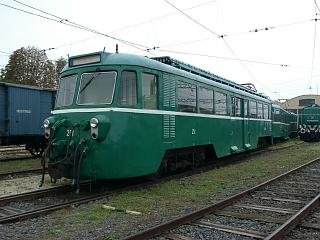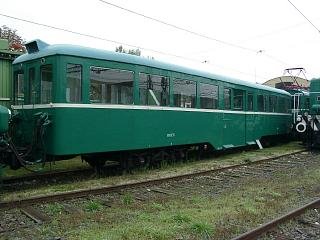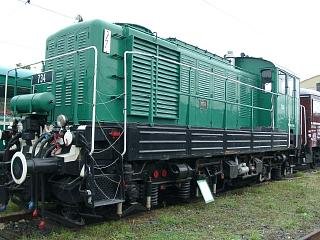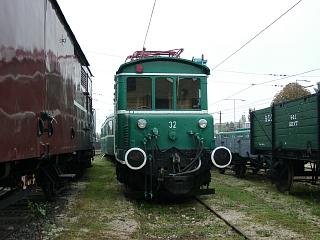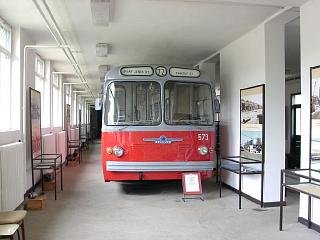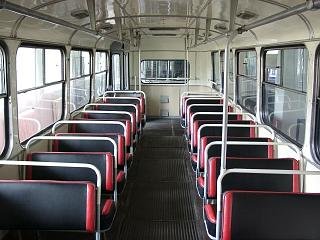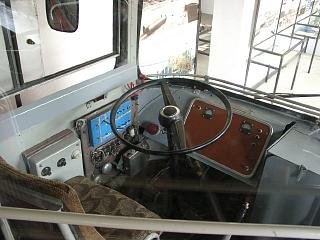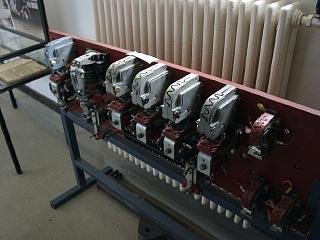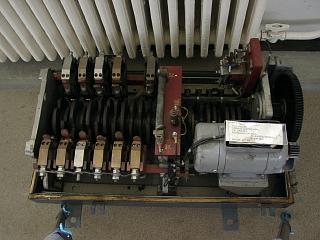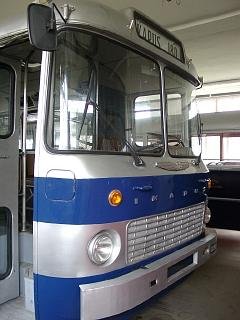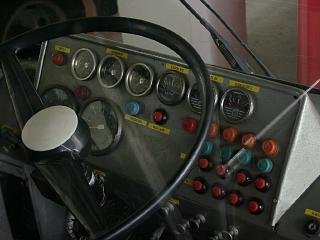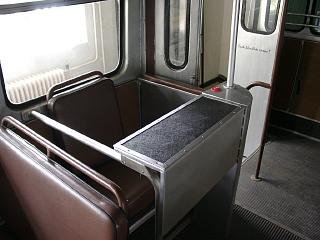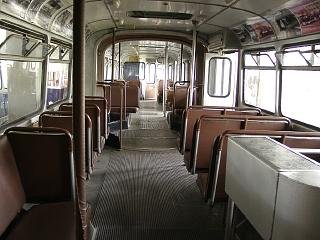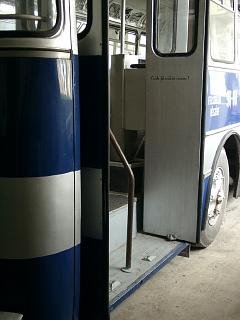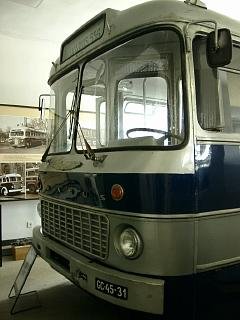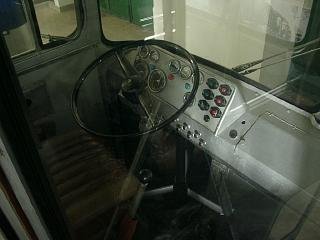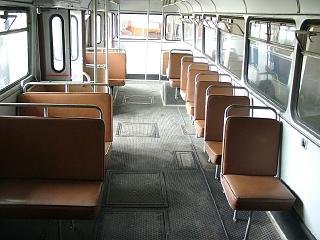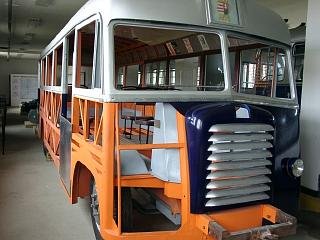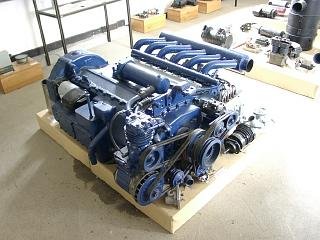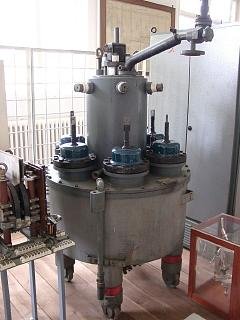The site of museum lacks on roofed rooms, but has plenty of room for future acquisitions I think. I'd like to see all these rails populated by dozens of old trams, EMU's and locos!
HÉV motorcar Type M VIII...
... and its trailer counterpart, the P XV. In reality these trailers were built before the M VIII's, but they do go nicely together!
Diesel-electric loco number 734, another Ganz-built machine of the museum. It's popular nickname is "Bobo"; it is the same type az the pne used by hungarian railways company MÁV under the name M44.
This loco is suited for usage on both HÉV and normal railway lines. You can see this mess of couplings again!
Electric loco number 32 of Type L VI is called a "Crocodile" because of the projecting "nose" before the drivers cab, which looks like the jaws of a croc. This electric engine sometimes goes on round trips with motorcar M VIII and trailer P XV during special occasions or when someone hires them - this is BKV's nostalgy HÉV train.
The rear rooms of the museum also feature some interetsing public transport objects, like this soviet-made Ziu-5 trolley bus.
The interior of the Ziu...
... and the driver's cab, which is quite primitive, I think. This trolley is of course operable too, even if it doesn't look like that! For example, the lack of a tachometer is quite normal!
The seat of the conductor.
The conctator-board of the Ziu-5, the TP83A was used in the Ikarus 280T series when the Zius were scrapped - interior parts last longer!
The servo controller unit of the Ziu-5, -9 and the Ikarus 280T.
The direction-changer of the types mentioned above...
I remember riding buses like this Ikarus 180 when I was a child!
The driver's place.
This was the modern city bus in the sixties, which was then pushed into oblivion when the highly successful 200-series entered production in the Ikarus works. This is so true that despite the first Ikarus 260's entered service at BKV in the early seventies, they haven't got one displayed in the museum - there are still thousands out there all over the world...
The conductor's seat.
The interior of the Ikarus 180.
The nice wide back door.
The Ikarus 556 is the solo version of the Ikarus 180 articulated we saw before.
The driver's cab...
... and the passenger cabin.
A demonstration of how this old Rába Tr3,5 "trambus" (1948) was constructed.
The Rába D2156 diesel motor - a license from M.A.N - was the heart of many classic Ikarus buses.
A few old machines: a classic rotating inverter used in the early days of the tram.
This one's a bit younger: a mercury-arc rectifier.
An Si (as in silicon) diode converter.
Overhead cable suspension as done in the first half of the 20th century.
And to conclude all this: cross-sectional views of different types of rails. Number 5 and 8 is the classic "Phoenix" superstructure used on paved street curfaces. 9 and 12 are "Vignoles"-type rails, I believe this is the most commonly seen one on open tracks everywhere. 16 is the block-cross-sectional-rail used on "big panel track superstructure" commonly used in the eighties in Hungary.
Back to the main page
HamPage

